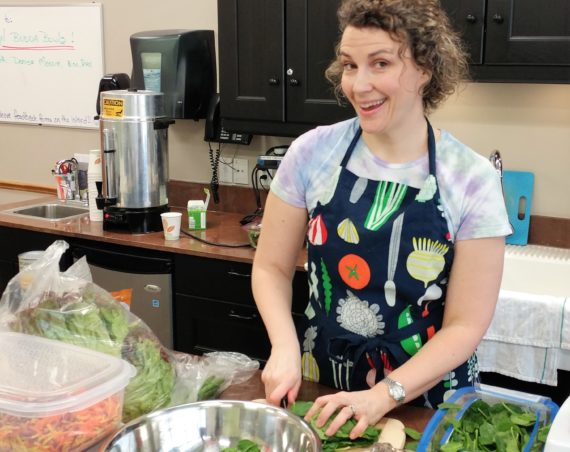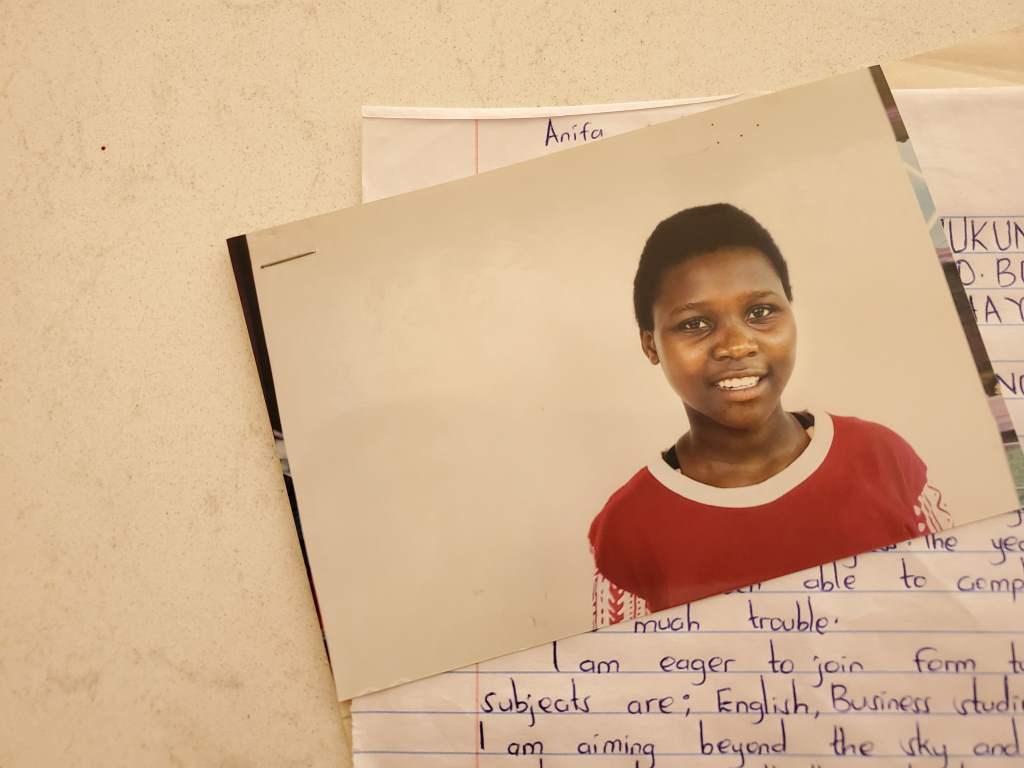Plastic: we know it’s not optimal for our health or the health of our planet. That’s why we need to work together to tackle the effects of plastic waste and create opportunities for good. As individuals, we can continue to work to reduce our plastic use. Thankfully, there are mission-focused companies figuring out how we can reuse and re-purpose plastic waste. One way to re-purpose plastic is to turn it into fashion and use it to keep us warm and dry.
Norden Project, a Canadian B Corporation, is doing just that — making sustainable, ethical and stylish outerwear from recycled plastic. Turning plastic water bottles into fashion is hard to imagine. How exactly does it work? To help us learn more about sustainable fashion and environmentally conscious business practices in the industry, we connected with Norden’s co-founder, Mayer Vafi.
In this interview, we discussed with Mayer his impressions of plastic waste and found out why Norden uses recycled materials in their outerwear and how recycled water bottles become fabric. We also found out why being a B Corp makes Norden a unique company in the fashion industry.
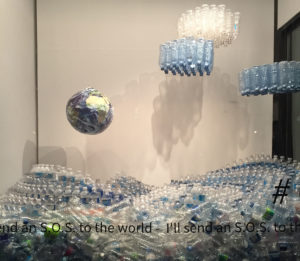
WEHL: Tell us a little about yourself, how you became interested in plastic waste, what Norden is and what inspired you to start your company.
MV: I was on a sourcing trip for a previous employer when I realized our industry was only focused on profitability with no concern for people or the planet. It became clear to me that we couldn’t continuously use up the planet’s finite resources. In addition to that, during Copenhagen Fashion Week in 2015 I stumbled upon an artist installation raising awareness on plastic pollution (see below). That was a jarring visual that got me thinking.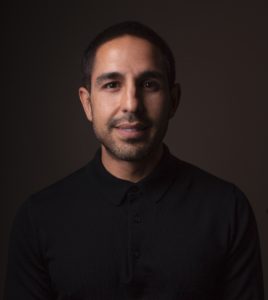
WEHL: We’re hearing the term “sustainable fashion” more and more these days. What does “sustainable fashion” mean to Norden, and how can we divert plastic waste into something useful?
MV: We built our company’s products, processes, and culture around a singular goal: eliminating the idea of waste. All our fabrics, lining and insulation are made from recycled waste. Whether we source from REPREVE, POLARTEC or other strategic partners, it comes from recycled waste. All our products are made from recycled plastic, and to date we have prevented over 2,000,000 post-consumer bottles from going into landfills.
However, we want to do more than just breathe new life into old plastic; we want to ensure that we aren’t simply delaying the inevitable, with coats ending up in landfills after all. Our End of Life program allows us to take customers’ used Norden coats and ensure they are repaired, donated, or properly recycled with TerraCycle. We are truly committed to working on a closed loop system and cleaning up the planet as we do it.
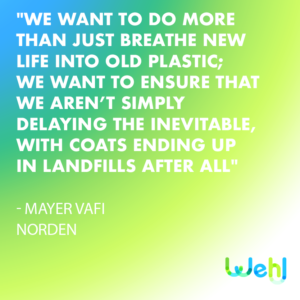
WEHL: In general, making sustainable fashion purchases can be viewed as being too expensive. What are your thoughts on this?
MV: Unfortunately, most companies operate solely focusing on profitability and rely on their customers to compromise on the price. For example, organic cotton – we all know it costs more, we all know the larger corporations are not going to absorb the additional cost – that’s why organic cotton ended up costing 20%-30% more to the end consumer and that’s why it failed. I believe companies should be measured by their impact on society and their environmental impact, rather than their quarterly results.
WEHL: What is your mission with Norden?
MV: Everyone making better choices for a cleaner planet. Inspiring change through clothing made from waste.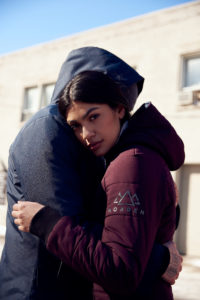
WEHL: How did you come up with the name Norden?
MV: I love Scandinavia. I love their approach in education, the way they care for their people and planet. I draw a lot of inspiration from many Scandi-Brands. I appreciate their designs, clean lines, minimalistic approach.
WEHL: What made you want to use recycled materials? Why does using recycled plastic matter?
MV: Most winterized garments are made from synthetic materials. We challenged ourselves to figure out a way to use recycled materials only and our “A Ha!” moment was when we realized rPET exists and we needed to find a traceable and transparent way to incorporate as our main sources of raw material. [Ed. note: rPET means recycled polyester fabric.]
It takes 450 years for a single water bottle to break down into micro plastic and worldwide 1,000,000 bottles are bought each minute. All the plastic that was ever created still exists on our planet. Please note: we are not a solution, we simply implemented better business practices in what we know how to make.
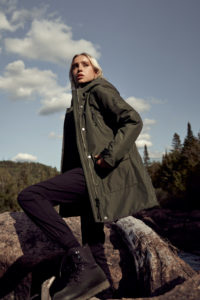
WEHL: Thanks for sharing about the longevity of plastic waste. What do you mean when you say “See the good in plastic”?
MV: It’s not plastic’s fault; it’s our toxic behaviour and will to cut cost and increase profit that’s the issue. There’s so much good that comes from plastic – advancement in the medical world, space exploration, safety industry, helping people with disabilities (e.g. prosthetics – check out this great video with Paralympic Athlete Erin Latimer), even the keyboard I am typing on is made with plastic.
Using that last example, this keyboard will last a lifetime and allow me the ability to communicate with co-workers, loved ones, distant friends … Even our smartphones … All this to say – it’s not plastic’s fault – the problem isn’t the straw – it’s our toxic behaviour. For more, you can watch our “See the Good in Plastic” video here.
WEHL: From the outer layer to the inside filling, what details do you have to consider when you first begin to design a warm, stylish and functional winter coat?
MV: The most important detail is performance. The garment has to do its job – keep the consumer warm! We make sure the raw materials we use are functional and will perform. From there, we move into the purpose of the garment – will it be used for extreme cold? City life? Hybrid? From there we move into the styling.
WEHL: How does the process of transforming recycled plastic into yarn, and yarn into fabric, work?
MV: We only use type 1 plastics, mainly water bottles. Once the bottles are collected, they’re shredded and sanitized. From there the petroleum is extracted and solidified into beads, and these beads are turned into recycled polyester yarn. With the yarn we weave all required elements to create a jacket: Lining, insulation and shell fabrics.
WEHL: Tell us about what “ethically produced” means and where your jackets are made.
MV: For us it’s important that all stakeholders consider people and planet. We only work with factories that are WRAP, BSCI and ACCORD certified.
WEHL: You are a certified B Corporation; what inspired you to get this certification? What are a couple of the things you do differently as part of this certification?
MV: We wanted to join a community of like-minded individuals. We wanted to be the change we want to see in the world. Before making any decisions, before signing on a new partner, a new freelancer or a new supplier – we ask what the impact will be on people and planet, we see if our values are aligned and if it all checks out – we move ahead.
WEHL: In addition to making purchases from ethical and eco-friendly clothing brands, what else can we do to help make our wardrobe more environmentally friendly?
MV: Small consistent actions are key! You can visit our blog posts for some ideas on how to reduce your plastic waste and eco-friendly travel destinations.
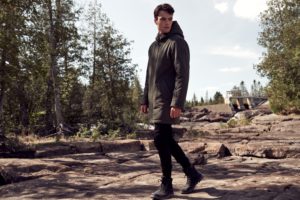
WEHL: What does “wellness” mean to you?
MV: I can write three pages on this question alone … Wellness to me is harmony. Being able to remain calm. Whether through mindfulness, exercise or even eating (tasting the food, noticing flavours). Really enjoying the moment. Unfortunately we have reached pandemic levels of self-distraction … we need to wake-up!
WEHL: The Norden headquarters are in Montreal, Quebec. Do you have a favourite healthy restaurant recommendation in the city?
MV: These are all personal favorites, so might not appeal to everyone, but here is my list: Restaurant Radis, Panthere Verte, LOV, invitation V and if you’re in the PUB mood – Bowhead
WEHL: What is your favourite Norden jacket to wear and what is your favourite outdoor activity to do while wearing it?
MV: My favorite jacket is MATIAS. In the coldest days – you’ll be warm! The female version in INGA or ANJA. These jackets are guaranteed to keep you warm up to -40. I am not much of a winter sports guy – I’m a runner and it’s hard to do in the winter – but we love going sledding! Also known locally as Tubing
WEHL: How do you maintain your own personal wellness while managing the demands of building and operating a business?
MV: I read, I read a lot. I meditate (not enough though). I exercise daily and do my best not to self distract!
WEHL: Do you have any advice for an entrepreneur who’s interested in building a socially and environmentally conscious business?
MV: I recommend reading a book called CORE by NEIL GAUGHT.
Connect with Mayer Vafi and Norden:
- Web: www.nordenproject.com
- Email: [email protected]
- Phone: 1-844-323-8837
- Wehl Platform: @norden
We invite you to join our all-in-one healthy lifestyle app at Wehl.com!


